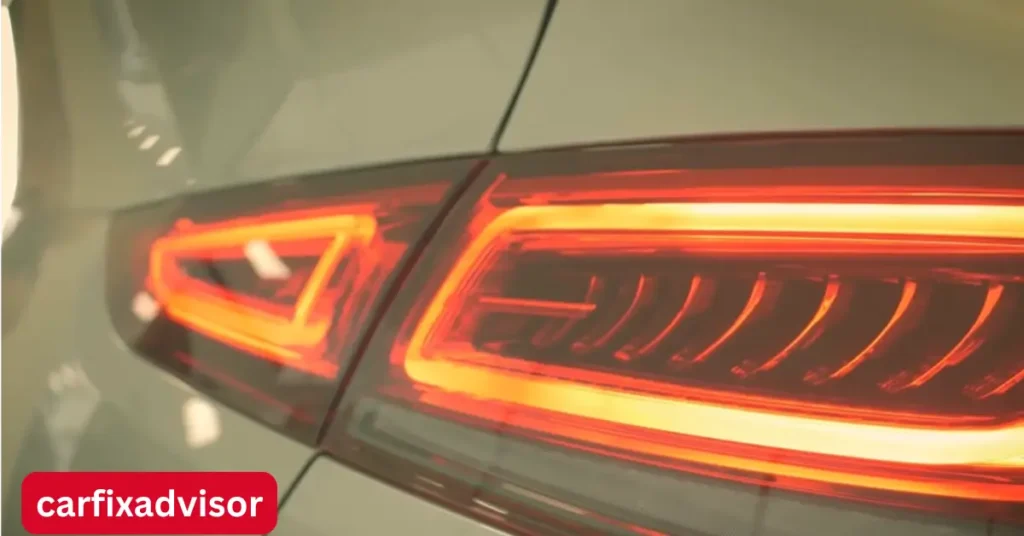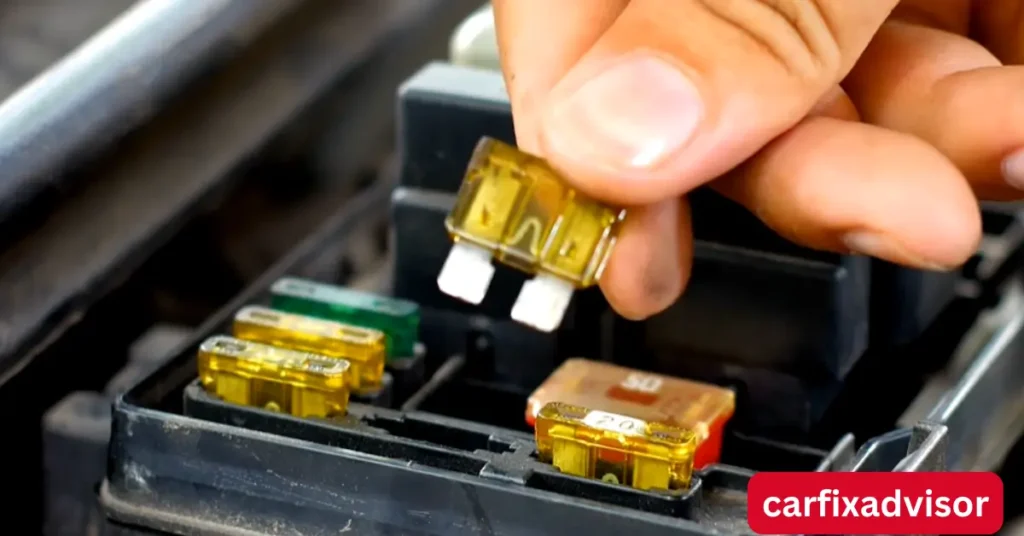If you’ve noticed that Both Tail Lights are Not Working, you’re not alone. This is a common problem that can occur in any vehicle. While it may seem like a minor issue, having non-functional tail lights is a serious concern for your safety and can even get you a ticket. Thankfully, the problem is often easy to fix, and in this article, we will walk you through the common causes of this issue and how to troubleshoot and repair it.
What Could Cause Both Tail Lights to Stop Working?
There are several reasons why both tail lights might stop working simultaneously. These can range from simple issues like blown fuses or faulty bulbs to more complex electrical problems. Let’s explore the most common causes:
Blown Fuse
A blown fuse is one of the most common reasons both tail lights stop working. Fuses protect the electrical system from short circuits and overloads. When a fuse blows, it cuts off power to the affected circuit, which in this case would be the tail lights.
Faulty Bulbs
The simplest explanation is that the tail light bulbs may have burned out. Over time, the filaments in bulbs can wear out, causing them to stop working. It’s always worth checking the bulbs for damage.
Wiring Issues
Wiring problems such as loose, damaged, or corroded wires can interrupt the electrical flow to your tail lights. This issue is more complex and may require some diagnosis and repair to get your lights working again.
Faulty Light Switch or Relay
A malfunctioning light switch or relay can prevent power from reaching your tail lights. In some cases, the switch may not send the signal to turn on the lights, or the relay may be faulty, preventing the circuit from completing.
Malfunctioning Sensors
Modern cars often have sensors that can affect the lighting system. A malfunctioning sensor could cause both tail lights to stop working, especially in newer vehicles with integrated lighting controls.

How to Fix Both Tail Lights When They Are Not Working
If both tail lights aren’t working, it’s important to start troubleshooting systematically. Here’s how to go about it:
Step 1 – Check the Tail Light Fuse
The first thing you should do is check the fuse for the tail lights. Here’s how:
Locate the Fuse Box: Depending on your vehicle, the fuse box could be under the dashboard, near the driver’s seat, or under the hood. Consult your owner’s manual to find the exact location of the tail light fuse.
Inspect the Fuse: Once you’ve found the fuse for the tail lights, visually inspect it for any damage. Look for a broken filament inside the fuse.
Replace the Fuse: If the fuse is blown, replace it with a new one of the same amperage. Be sure to check the owner’s manual for the correct fuse rating to avoid causing any further damage.
Step 2 – Inspect the Tail Light Bulbs
If the fuse is fine, the next step is to inspect the bulbs themselves.
Remove the Tail Light Bulbs: Carefully remove the bulbs from the tail light assembly.
Check for Damage: Inspect the bulbs for any signs of damage, such as a burnt filament or broken glass. If the bulbs are damaged, it’s time to replace them.
Replace the Bulbs: Make sure you use the correct type and wattage of bulbs when replacing them. This ensures that your tail lights function correctly and safely.
Step 3 – Check the Wiring and Electrical Components
If the fuse and bulbs seem to be fine, the problem could lie within the wiring or other electrical components. Here’s how to check:
Inspect the Wiring: Look for any loose, damaged, or corroded wires around the tail light assembly. Wiring issues can prevent the tail lights from working and may require more in-depth troubleshooting.
Test the Light Switch: If the wiring appears to be intact, the next step is to test the light switch. A malfunctioning switch could be preventing power from reaching the tail lights.
Check the Relay: Some cars have a relay that controls power to the tail lights. If the relay is faulty, it can prevent the lights from working. If you suspect the relay is the issue, it may need to be replaced.
Step 4 – Consider the Light Switch, Relay, or Sensor
If the fuse, bulbs, wiring, and electrical components seem fine but the lights are still not working, there may be a deeper issue with the light switch, relay, or sensors:
Test the Light Switch: A faulty light switch can prevent power from reaching the tail lights. If your switch is malfunctioning, it may need to be replaced.
Check the Relay: As mentioned earlier, the relay controls the power going to the tail lights. If the relay is faulty, it can cause the lights to stop working. Test the relay and replace it if necessary.
Faulty Sensors: If you have a modern car with a sensor-driven lighting system, a faulty sensor might be preventing the tail lights from turning on. In this case, consult your mechanic for a more advanced diagnosis.
When to Call a Mechanic for Help
If you’ve gone through the above steps and the problem persists, it may be time to consult a professional mechanic. Here’s when you should seek professional help:
Electrical System Issues Beyond DIY Repair
If the issue involves complex electrical problems, such as wiring issues deep within the system or problems with the vehicle’s computer, it’s best to leave the repair to a professional. Working with electrical systems can be complicated and may require specialized tools and knowledge.
Faulty Sensors and Relays
If the sensors or relays are malfunctioning, it may require a more in-depth diagnostic process. Mechanics have the necessary tools to test and replace these components correctly.
How to Prevent Tail Light Issues in the Future
Once you’ve fixed your tail light issue, it’s important to take steps to prevent it from happening again:
Regular Maintenance of Electrical Components
Regularly inspect the electrical components of your car, including fuses, bulbs, and wiring. Keeping an eye on these parts can help you catch problems early before they become bigger issues.
Inspecting Tail Lights Periodically
Inspect your tail lights periodically to ensure that the bulbs are intact and the wiring is in good condition. Replacing bulbs as soon as they show signs of wear can prevent further damage.
Cleaning the Tail Light Assemblies
Clean the tail light assemblies to prevent dirt and corrosion from accumulating. Keeping your tail lights clean can extend their lifespan and ensure they function properly.
FAQs on Both Tail Lights are Not Working
Why Aren’t My Tail Lights Working but the Brake Lights Are?
If your brake lights are working but the tail lights aren’t, the issue is most likely with the fuse or the bulb. In some cases, a faulty connection in the tail light wiring could be the cause.
Can I Drive Without Tail Lights?
No, driving without working tail lights is illegal and dangerous. Tail lights are essential for visibility, especially at night or in low-light conditions. You should fix the issue before driving again.
How Do I Know If My Tail Light Fuse Is Blown?
A blown fuse will have a broken filament inside. You can visually inspect the fuse, or use a multimeter to test for continuity. If there is no continuity, the fuse is blown and needs to be replaced.
How Much Does It Cost to Fix Tail Lights?
The cost of fixing tail lights can vary depending on the issue. Replacing bulbs can cost as little as $10 to $20, while replacing fuses or relays might cost $50 to $100. If you have to replace wiring or sensors, the cost could be higher, ranging from $100 to $300.
Final thoughts: Both Tail Lights are Not Working
Both tail lights not working can be caused by several issues, including blown fuses, faulty bulbs, wiring problems, or malfunctioning components like the light switch or relay. By following the steps outlined above, you can troubleshoot the problem and fix it yourself or know when it’s time to consult a mechanic. Regular maintenance and inspections can help you avoid future tail light issues and keep your vehicle running safely on the road.

